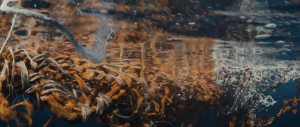
Plastic is a synthetic polymer that combines phenol (derived from tar) and formaldehyde. Its invention in 1907 by Leo Baekeland and the subsequent big boom in the mid-90s was thought to solve all our
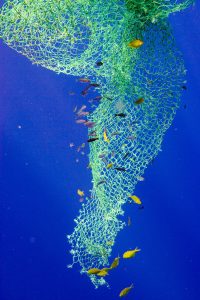
problems. It was a wonder product 🙌🏽. It made furniture more affordable, protected food, and could withstand harsh conditions like the desert, arctic, and ocean. We have come to learn too late that it was, in fact, far from a long-term solution.
Plastics are suffocating and poisoning our environment, from land to sea. Around 14 million tons of plastic are disposed of at sea every year, and the nature of plastic means that it can take decades, even centuries, to degrade. That means almost all plastic ever created remains today, even in harsh environments like the ocean. Whilst a plastic straw can take around 200 years to decompose fully in oceanic waters, other items such as plastic cups or diapers, arguably used much more often, can take up to 500 years! Worse still, multifilament fishing gear can remain at sea for more than 600 years as these materials are specifically designed to withstand the elements of nature.
Our minds are cast to videos from social media of beaches covered in plastic bottles, seabirds wrapped up in a plastic bag, a seal with a 6-ring binder piercing its neck, or turtles with straws stuck up their noses. These videos are difficult to watch and have imprinted on all of us. The same impact has been had on funders for ocean clean-up initiatives, which have experienced a huge increase in recent years. As a clean-up initiative focussing on plastic bottles, it’s now easier than ever to secure funding.
What you probably don’t know, but should: Fishing gear is one of the lesser talked about sources of plastic pollution at sea, and yet it makes up a significant percentage. The widely used estimate for fishing gear as plastic pollution in the ocean is 10%, between 800,000-1.2 million tonnes annually! Recent studies have found that fishing gears make up as much as 86% of plastics in areas such as the Great Pacific Garbage Patch and around 85% in habitats such as sea mounts, ocean ridges, and the sea floor. Furthermore, fishing buoys alone make up 58% of all large plastics at the ocean surface. 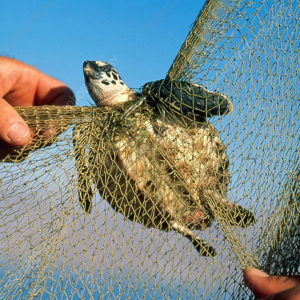 These marine plastics are caused by the abandonment or loss of industrial plastic fishing nets, fishing lines and fish aggregation devices (FADs); the numbers really speak for themselves.
These marine plastics are caused by the abandonment or loss of industrial plastic fishing nets, fishing lines and fish aggregation devices (FADs); the numbers really speak for themselves.
Marine plastic debris litters coastlines, entangles endangered and protected species, and has toxic, cumulative effects throughout the food chain. It also spreads diseases, contributes to invading alien species entering different ecosystems, and regularly enters the waters of those who did not cause the pollution—such as the Azores.
Recently named a Whale Heritage Site and a Hope Spot, the Azores demonstrates a commitment to ocean conservation that surpasses global standards. With over 110,000 km2 of existing marine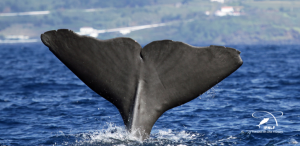 protected areas, the local communities and conservation groups work tirelessly to safeguard their environment and the dependent marine organisms. With an exclusive pole-and-line fishing zone, the Azores artisanal fishery catches its seafood responsibly. However, the island’s geographical location, on the periphery of the North Atlantic subtropical gyre, exposes it to a heavy influx of marine plastic debris, predominantly fishing gear, primarily discarded or lost by foreign fisheries operating in other regions and carried by currents from different oceanic regions.
protected areas, the local communities and conservation groups work tirelessly to safeguard their environment and the dependent marine organisms. With an exclusive pole-and-line fishing zone, the Azores artisanal fishery catches its seafood responsibly. However, the island’s geographical location, on the periphery of the North Atlantic subtropical gyre, exposes it to a heavy influx of marine plastic debris, predominantly fishing gear, primarily discarded or lost by foreign fisheries operating in other regions and carried by currents from different oceanic regions.
This burden of plastic pollution is felt by small island communities whose waters have become increasingly plagued by literally the garbage of others. As in many instances, the communities that carry the burden of the impacts are rarely responsible for creating the issue. ALDFG encompasses a significant proportion of global ocean plastic pollution by weight, and lost fishing nets are considered the most harmful form of ocean plastic pollution. Synthetic nets remain in the ocean indefinitely until removed. In the Azores archipelago, these “ghost nets” entangle, suffocate and kill a wide range of marine megafauna with impacts throughout ecosystems.
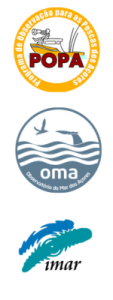 To draw attention to this issue, IPNLF worked with local partners – the Sea Observatory of the Azores (OMA) and the Azores Fisheries Observer Program (POPA), managed by the IMAR (Institute of Marine Research) to quantify the annual weight of ALDFG produced by the Azores pole-and-line fishery in 2019. It was found that the entire fleet only loses 0.5kg of fishing gear-related litter annually. This amount is near to nothing compared to other gear types, such as longline, trawling, or purse seine methods, that use far more plastic (nets) in their operations. However, all gears must be held to the same environmental standard.
To draw attention to this issue, IPNLF worked with local partners – the Sea Observatory of the Azores (OMA) and the Azores Fisheries Observer Program (POPA), managed by the IMAR (Institute of Marine Research) to quantify the annual weight of ALDFG produced by the Azores pole-and-line fishery in 2019. It was found that the entire fleet only loses 0.5kg of fishing gear-related litter annually. This amount is near to nothing compared to other gear types, such as longline, trawling, or purse seine methods, that use far more plastic (nets) in their operations. However, all gears must be held to the same environmental standard.
The Plastic Neutrality Project, launched in collaboration with the Sea Observatory of the Azores (OMA), POPA, IMAR, Associação de Produtores de Atum e Similares dos Açores (APASA), FPA, and with funding from Fish4ever and Biocoop France, aimed to coordinate three annual Ghost Gear Removal Competitions from 2021 to 2023.
The competition among the pole-and-line fleet worked to remove ALDFG and marine debris they encountered during their fishing trips and, in doing so, achieved the world’s first plastic neural fishery. In the first year of the competition, fishers removed 875 times more plastic than they lost, and in the following year, the fleet removed 734kg of marine litter (620kg confirmed to be fishing gear), which is almost 1500 times more plastic than they lost in the same time frame. Therefore, in 2022, the Azores was already officially named the world’s first “plastic-neutral fishery”!
Last year, 2023, was even more successful as the fleet had already matched the achievements of previous years, with two months left in the competition. Based on the organisms found, one of the large nets retrieved could be traced back to being lost or discarded over 30 years ago near Greenland! This means this incredibly large net had been ghost fishing throughout the Atlantic Ocean, ultimately ending up at the Azores archipelago. Imagine the damage it has done over the past three decades! The competitions achieved their primary objective and elevated the fishery to a plastic-positive status for the next 800 years.
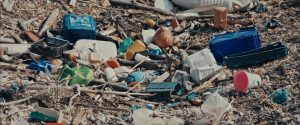
While consumers may not bear direct responsibility for abandoned gear at sea, their purchasing choices influence demand and, consequently, the market. Seafood, particularly tuna, harvested using diverse methods worldwide, has varying consequences for oceans and the environment. However, the consumer can only do so much, and it’s unfair to attribute the responsibility solely to the end buyer.
Decision-makers need the power to choose responsibly and enforce change. In this case, it would come to the procurement decisions of brands and retailers honouring their commitment to responsible and sustainable sourcing. They would need to look beyond stickers, stamps, and claims and truly look at the impact of fishing gear on the species they stock.
Legislative decision-making must ensure that contributions to ocean conservation are duly acknowledged in markets and regulations. This recognition allows fisheries to employ sustainable and responsible practices, particularly those utilising the most selective fishing methods and attempting to reduce their overall environmental impact, to derive social and economic benefits from their work and thereby secure their livelihoods. Furthermore, they must start holding the industry that uses these large nets and is not taking responsible control of their loss or discard more accountable for their actions. The “Polluter Pays Principle”, in this case, could be fair and simple; it requires polluters to bear the cost of the pollution they cause.
Whilst all plastic pollution harms marine life, it’s time we took our response further than initiatives directly connected to consumers. While consumers can drive change, we still need to hold further removed industries, like polluting fisheries, accountable for the environmental impacts of their operations. It is crucial to ensure that the industry takes responsibility for the consequences of its actions, as the project has ultimately shown that the people who shoulder the responsibility are rarely the cause of the problem.
It is an incredible achievement to be the world’s first plastic-neutral fishery. This initiative by the one-by-one Azores fisheries, which do not significantly contribute to oceanic plastic pollution, sets a benchmark for best practices in the industry. Fisheries contributing to pollution must adhere to this standard, fostering collective action to combat plastic pollution at sea. The innovative plastic removal approach holds potential for broader industry adoption, catalysing positive global changes.